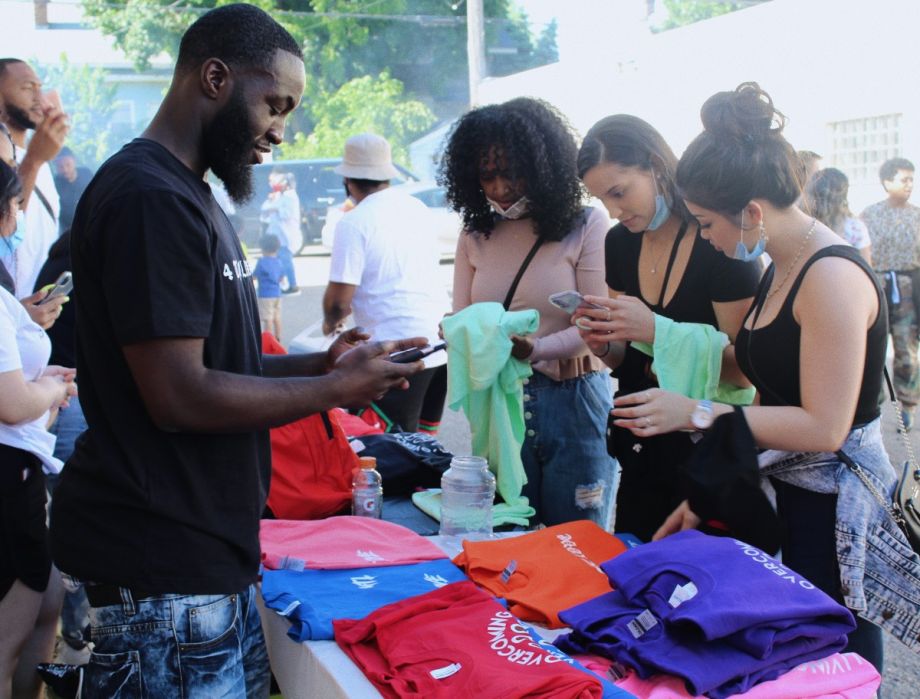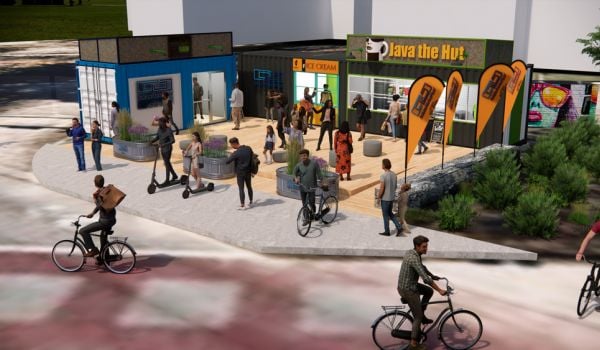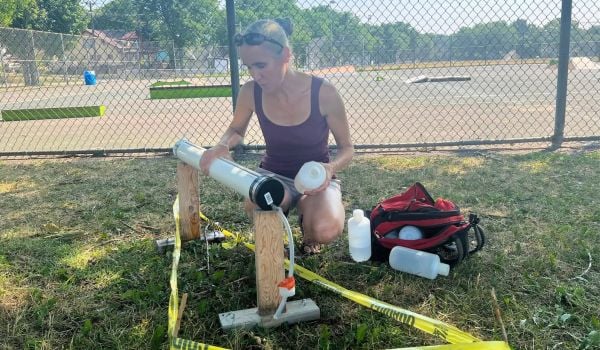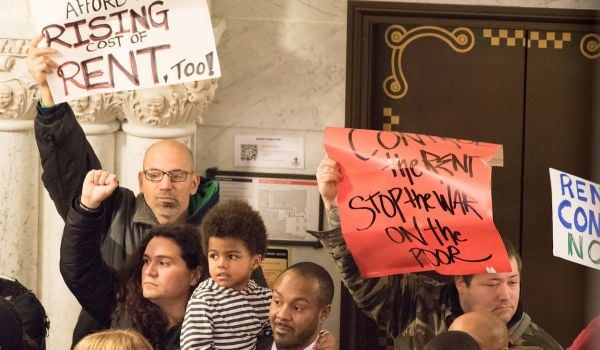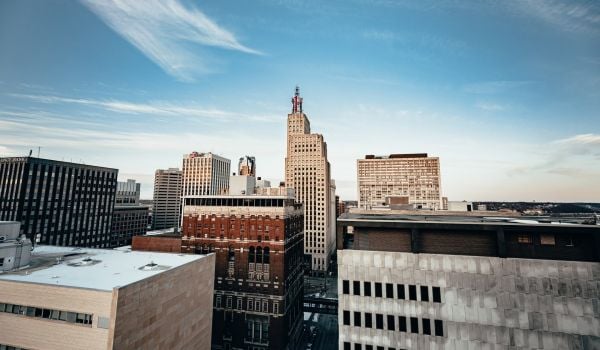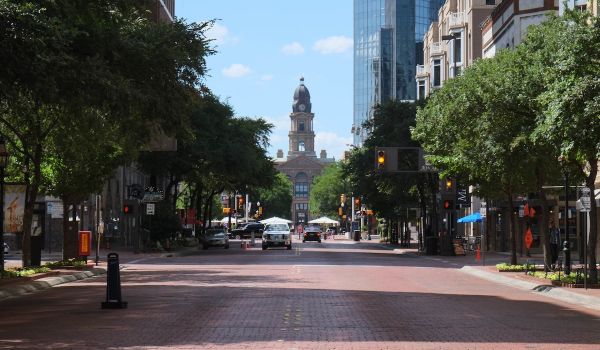When Dave Wanpue was a kid, he and his cousins would take a bus from his house in Minneapolis to the downtown Light Rail station before taking the train south to Bloomington, just outside the Twin Cities, to get to the Mall of America. They’d spend afternoons window shopping and talking about what they’d buy one day. As a teenager, he would shovel snow in the winters, rake leaves in the fall, and cut grass in the spring and summer in order to buy the new Air Jordans whenever a new pair dropped. “We would sleep in our cars at the Mall of America to get in at 8 a.m. and be the first in line at Champs or Foot Locker,” he recalls.
Today, thanks to a new program designed to support small retailers in the wake of COVID-19 and this summer’s civil unrest, Wanpue has his very own store at the Mall of America, the biggest mall in the country — a dream come true.
“It’s been an important project for us at the mall. We recognize the impact of not only COVID, but the unrest in Minneapolis and St. Paul,” says Jill Renslow, executive vice president of development and marketing at the Mall of America. “In times of crisis we wanted to reach out to see how we can help.”
That help has taken the form of the mall’s Community Commons project that has offered six months of free retail space to 17 local small businesses that have been impacted by either (or both) the pandemic or civil unrest. All of the 17 retailers, which range from traditional apparel companies to art and prepackaged food vendors, are minority-owned and 10 of the 17 are women-owned.
This is, according to Dr. Hye-Young Kim, professor and director of the Center for Retail Design and Innovation at the University of Minnesota, exactly in line with how malls were intended to function and, perhaps, how they should endeavor to stay relevant in today’s rapidly changing retail landscape. “The mall was originally conceived of as a community center where people would converge for shopping, cultural activity, and social interaction. Throughout the history of American shopping malls, the huge success and impact of a particular shopping mall has largely depended on its potential to enhance community life,” Kim says. “Especially during these challenging times, the basic premise for a shopping mall like MOA is to make itself an indispensable servant of the community.”
Mall of America began conversations with local community groups in June to figure out how they could best be of service. “We were finding a lot of businesses looking for temporary spaces to continue to operate,” Renslow says of the scene on the ground after the unrest following the killing of George Floyd died down. “Many had to shift operations online and didn’t have a physical space.” Renslow and company landed on the idea of offering dedicated, rent-free space within the mall.
Launched in October, the six-month project includes the busy holiday season — a boon for the small retailers, many of whom had dreamed of or planned on eventually expanding into a space at the Mall of America one day as a part of their business goals.
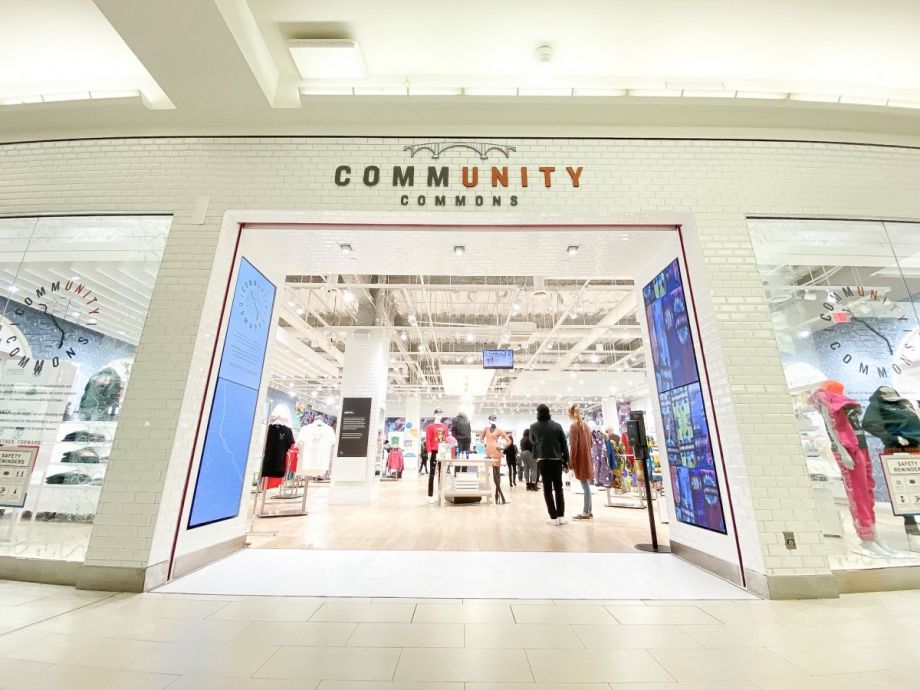
(Photo courtesy Mall of America)
“I’m like, the Mall of America during the holiday season? Really?! The biggest retail stage in the nation?!” says Joyce Sanders, whose apparel company, Urban 29, was one of the selected businesses. Urban 29 had been located on the corner of Chicago Avenue and Lake Street in Minneapolis for just one year before its building was destroyed during the civil unrest. “Being in a mall was my next step anyway. It just pushed my goals and dreams one step further. It kind of doesn’t seem real,” she says.
While the Mall of America is approaching the project strictly as the right thing to do, chances are there will be benefits in it for the mall as well, which was completely closed from March to June because of the COVID-19 pandemic and which has seen its mortgage go into “special servicing.”
“Community Commons may create new excitement for holiday shopping as we see more and more diversity-seeking consumers who engage in ‘ethnic crossover shopping,’” which is when a product or service reflective of a specific cultural group gains traction with a wider customer base outside of that group, Kim explains. “The ethnic minority entrepreneurs who dream big can benefit from this expanded market exposure. To build a successful crossover to a mainstream market, they need to appeal to an audience sizable enough to ensure profitability. Community Commons can provide a great opportunity for that purpose.”
Wanpue shares Sanders’ goal. “I would always say we’re going to have a storefront at the Mall of America,” he says, “even last year when I just started my company,” 4 The Love, an apparel company focused on offering experiential shopping events. “I had been hosting community events where… there might be a real estate agent to help with homeownership or a barber doing free haircuts to empower customers,” he says of the “before times.” Of course, the pandemic has deeply affected his events-driven business model, so the opportunity from the mall has been a godsend.
The Mall of America worked with Knock, Inc. a Minneapolis-based, women-run creative agency to design and develop the roughly 5,000-square-foot Community Commons space as well as help any of the 17 retailers with all things branding. The mall also partnered with Juxtaposition Arts, a local youth arts non-profit, to help decorate the space.
The mall worked closely with community groups to reach potential applicants. Interested businesses had to fill out a questionnaire designed to share the applicants’ stories while laying out the mall’s expectations for the partnership.
Just a few weeks in, “we’re already seeing fantastic traffic and sales numbers,” Renslow says.”Even with COVID, we’re predicting a pretty solid holiday season.” “Opening weekend got them kicked off to a great start. They had to replenish merchandise immediately after the first weekend. Wanpue says he’s on track to close out the month with $10,000 in sales—quadrupling his typical sales.
Renslow and her team are constantly sharing new ideas with their sister properties also owned by Triple Five Properties. While there are no concrete plans to expand the program to the other two Triple Five malls, the Mall of America is hopeful for continued partnerships in the future. “As much as they’re going to learn from us, we’re going to learn from them what success would look like beyond the first six months,” Renslow says.

Cinnamon Janzer is a freelance journalist based in Minneapolis. Her work has appeared in National Geographic, U.S. News & World Report, Rewire.news, and more. She holds an MA in Social Design, with a specialization in intervention design, from the Maryland Institute College of Art and a BA in Cultural Anthropology and Fine Art from the University of Minnesota, Twin Cities.
Follow Cinnamon .(JavaScript must be enabled to view this email address)

